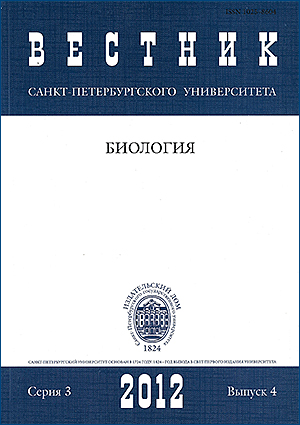Development and typification of gynoecium in representatives of subfamily Silenoideae (Caryophyllaceae)
Abstract
The article studies the gynoecium morphogenesis features of four species of Silenoideae subfamily of the family Caryophyllaceae, members of the tribe Lychnideae (Viscaria vulgaris, Coccyganthe floscuculi) and Diantheae (Saponaria officinalis, Dianthus arenarius). The study of gynoecium in dynamics has shown that the topography of the zones, time and the mechanisms of lysicarpous formation were different among all the species. Оn the early stages gynoecium develops as syncarpous-paracarpous (Coccyganthe flos-cuculi), syncarpous (Viscaria vulgaris, Dianthus arenarius) or lysicarpous-syncarpous (Saponaria officinalis). Later it becomes lysicarpous-syncarpous (Coccyganthe flos-cuculi, Saponaria officinalis), but in Viscaria vulgaris — syncarpous-lysicarpous and in Dianthus arenarius — lysicarpous. A column, on which intrusive angular placentae are located, is formed in the center of the ovary. This placentation is central-angular (axile). The isolation of columnar structure and formation of lysicarpia are preceded by an increase of cell size inside septa and accumulation of druse with crystals of calcium oxalate in it (Coccyganthe flos-cuculi, Saponaria officinalis, Viscaria vulgaris), or the apoptosis process takes place in the cells (Dianthus arenarius). The differences are revealed among the studied species, which lead to the formation of lysicarpous. This concerns the changes of the ovary shape, time of the beginning of cells and septa tissue destruction process, placental structure and disposition of ovules in lysicarpous zone. It examines the place of lysicarpous type in the system of gynoecium types.
Keywords:
morphogenesis, gynoecium, ovary, typification, Coccyganthe flos-cuculi, Dianthus arenarius, Saponaria officinalis, Viscaria vulgaris, Silenoideae, Caryophyllaceae
Downloads
Downloads
Published
How to Cite
Issue
Section
License
Articles of Biological Communications are open access distributed under the terms of the License Agreement with Saint Petersburg State University, which permits to the authors unrestricted distribution and self-archiving free of charge.





